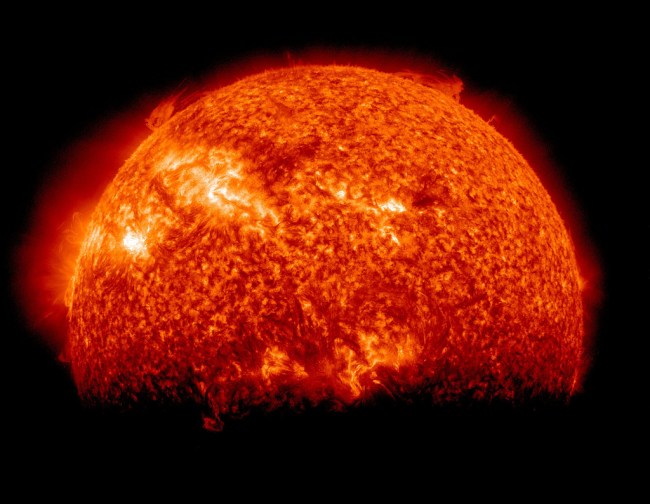NASA has released a new image of the sun from March 29, 2011. The portion of the sun that’s covered is actually the Earth. This photo was taken by the Solar Dynamics Observatory (SDO), a spacecraft that orbits the Earth at a distance of 22,000 miles. 72 minutes a day the SDO witnesses the sun being eclipsed by the Earth like this. In February, two NASA probes also gave us our first simultaneous shot of the entire surface of the sun, all 360 degrees. High resolution versions of this image can be found on Flickr. It’s strange, but our sun is a bit creepy when you look at it.

Editors' Recommendations
- NASA wants to launch a set of six mini spacecraft to observe the sun
- Parker probe data reveals link between solar flares and cosmic radiation
- How to watch the launch of the ESA and NASA Solar Orbiter on Sunday
- Scientists image the progression of a solar flare for the first time
- Exoplanet discoveries include two super-Earths that could support life


